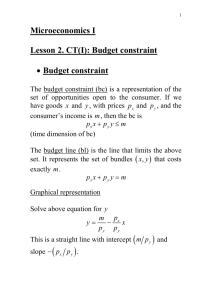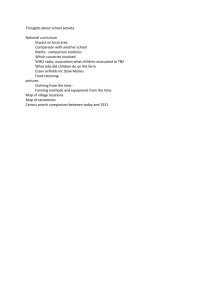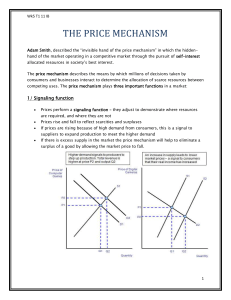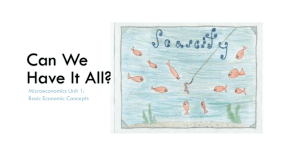Document
advertisement
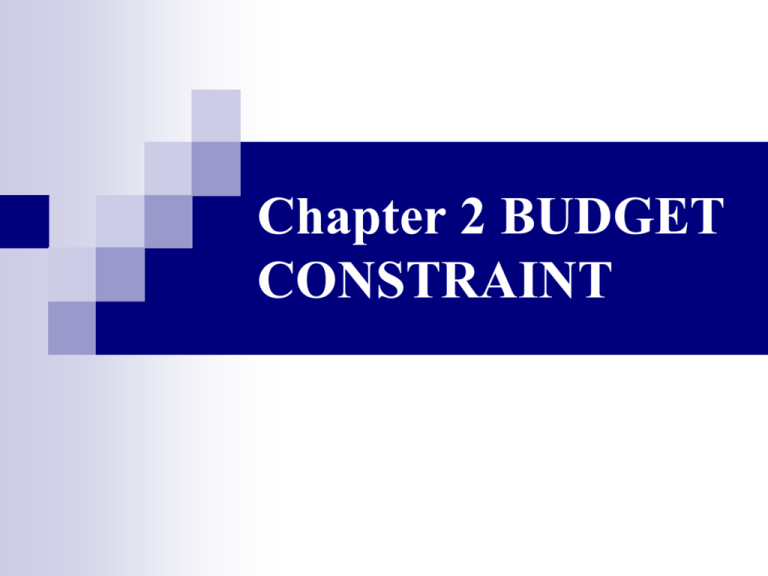
Chapter 2 BUDGET CONSTRAINT 2.1 The Budget Constraint Consumers choose the BEST bundle of goods they can AFFORD. Budget set: affordability Consumption bundle: (x1, x2) 2.1 The Budget Constraint The budget constraint p1x1+p2x2≤m p1x1 : the amount of money the consumer is spending on good 1. p2x2: the amount of money the consumer is spending on good 2. m: the consumer’s income 2.2 Two Goods Are Often Enough Composite good good 2 represents a composite good that stands for everything else that the consumer might want to consume other than good 1. The budget constraint will take the form: p1x1+x2≤m 2.3 Properties of the Budget Set p1x1+ p2x2 = m p1(x1+Δx1) + p2(x2+Δx2) = m Subtracting the first equation from the second: p1Δx1 + p2Δx2 = 0 Δx2/Δx1=-p1/p2 2.3 Properties of the Budget Set Opportunity cost of consuming good 1 the slope of the budget line. In order to consume more of good 1 one has to give up some consumption of good 2. 2.4 How the Budget Line Changes Changes in income: a parallel shift of the budget line. 2.4 How the Budget Line Changes Changes in prices: increasing price 1 while holding price 2 and income fixed. 2.4 How the Budget Line Changes Change the price of good 1 and good 2 at the same time: Multiplying both prices by t yields tp1x1+tp2x2 = m p1x1+p2x2 = m/t 2.5 The Numeraire The budget line p1x1+ p2x2 = m is exactly the same budget line as p1/p2x1+ x2 = m/p2 or p1/mx1+ p2/mx2 = 1 2.6 Taxes, Subsidies, and Rationing Quantity tax t dollars per unit of good 1, changes the price of good 1 from p1 to p1+t. Quantity subsidy s dollars per unit of good 1, the price of good 1 would be p1-s. 2.6 Taxes, Subsidies, and Rationing Value tax a sales tax at rate t, the actual price is (1+t)p1. Ad valorem subsidy an ad valorem subsidy at rate s, the actual price is (1-s)p1. 2.6 Taxes, Subsidies, and Rationing Lump-sum tax the budget line shifts inward. Lump-sum subsidy the budget line will shift outward. 2.6 Taxes, Subsidies, and Rationing Rationing Good 1 rationed. 2.6 Taxes, Subsidies, and Rationing Sometimes taxes, subsidies, and rationing are combined.
